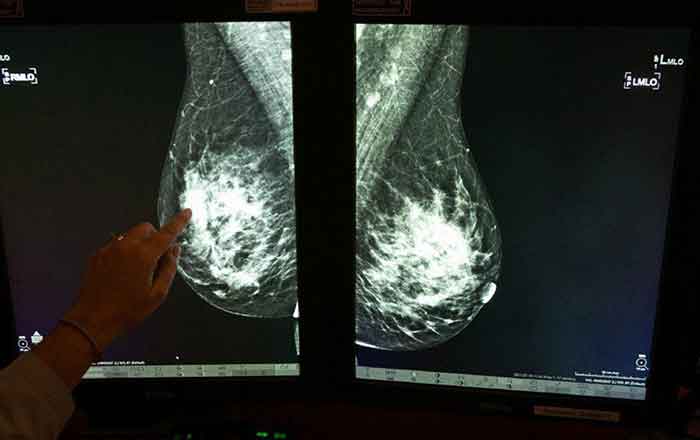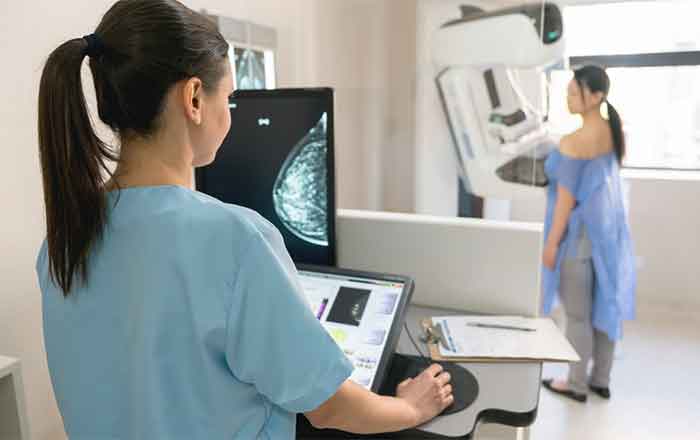Reynosa, Tam.-
Si usted es mayor de 40 años, un estudio de sus senos es aconsejable por los especialistas. Una mamografía es una imagen de la mama tomada con rayos X con el fin de buscar signos de cáncer de mama en sus etapas iniciales.
Una tecnóloga le coloca su mama sobre una placa de plástico y después la cubrirá con otra placa, para presionar firmemente.
Usted sentirá algo de presión, pero los pasos se repiten para tomar una imagen del costado de la mama. Después le sacarán una radiografía a la otra mama de la misma forma.

Deberá esperar a que la tecnóloga revise las cuatro radiografías para asegurarse de que no haya necesidad de volver a tomarlas.
Sea paciente. Para la mayoría de las mujeres, hacerse un estudio como este es un proceso molesto.
Algunas mujeres lo encuentran doloroso. Sin embargo, la toma es de unos minutos y las molestias desaparecen pronto.
Lo que sienta depende de la destreza de la tecnóloga, el tamaño de las mamas y la cantidad de presión que le tengan que aplicar.
Sus mamas pueden estar más sensibles si tiene la menstruación o está a punto de tenerla. Un médico con capacitación especial, llamado radiólogo, interpretará la mamografía.
Ese profesional revisará la radiografía en busca de signos de cáncer de mama en sus etapas iniciales u otros problemas.
Continúe haciéndose las mamografías de acuerdo con las recomendaciones para su caso.
Las mamografías son más útiles si pueden compararse con las que se haya hecho antes. Esto le permitirá al radiólogo compararlas para detectar cambios en sus mamas.
Especialistas recomiendan hacerse estudios cada año, hasta cumplir los 55 años. (Con información de Jorge Velasco)
……………….
Mammography: the study requires patience
By Jose Luis Montemayor
Reynosa, Tam.- If you are over 40 years old, a study of your breasts is recommended by specialists. A mammogram is an X-ray image of the breast taken to look for signs of breast cancer in its early stages.
A technologist places your breast on a plastic plate and then covers it with another plate, to press firmly.
You will feel some pressure, but the steps are repeated to take a picture of the side of the breast. The other breast will then be X-rayed in the same way.
You will need to wait for the technologist to review all four X-rays to make sure there is no need to retake them.
Be patient. For most women, having a test like this is an upsetting process.
Some women find it painful. However, it takes a few minutes and the discomfort disappears soon.
How you feel depends on the skill of the technologist, the size of your breasts, and the amount of pressure applied.
Your breasts may be more tender if you are or are about to have your period. A doctor with special training, called a radiologist, will interpret the mammogram.
That professional will review the X-ray for signs of early-stage breast cancer or other problems.
Continue to have mammograms according to the recommendations for your case.
Mammograms are more useful if they can be compared to those that have been done before. This will allow the radiologist to compare them to detect changes in your breasts.
Specialists recommend doing studies every year until reaching the age of 55. (With information of Jorge Velasco)



